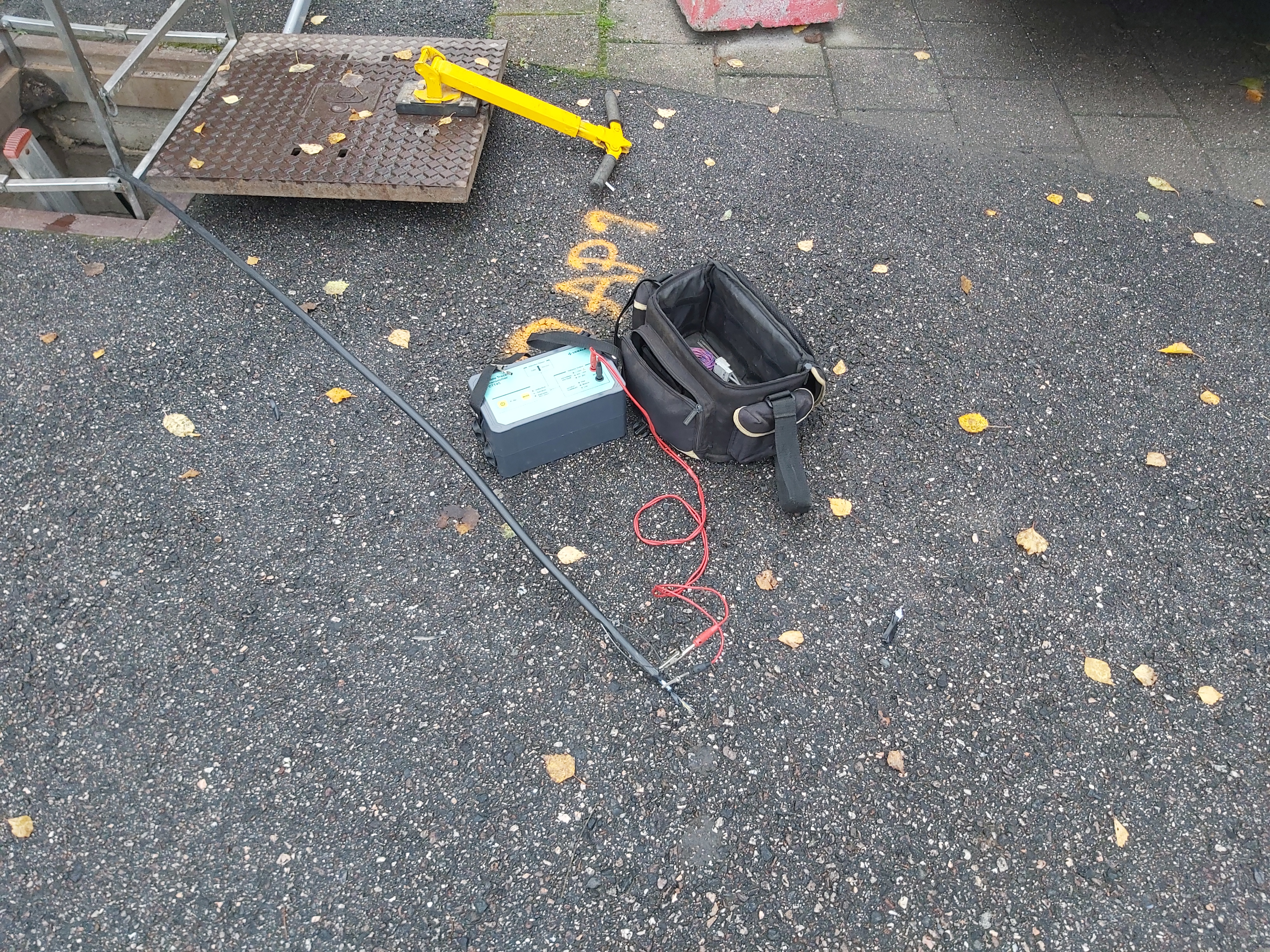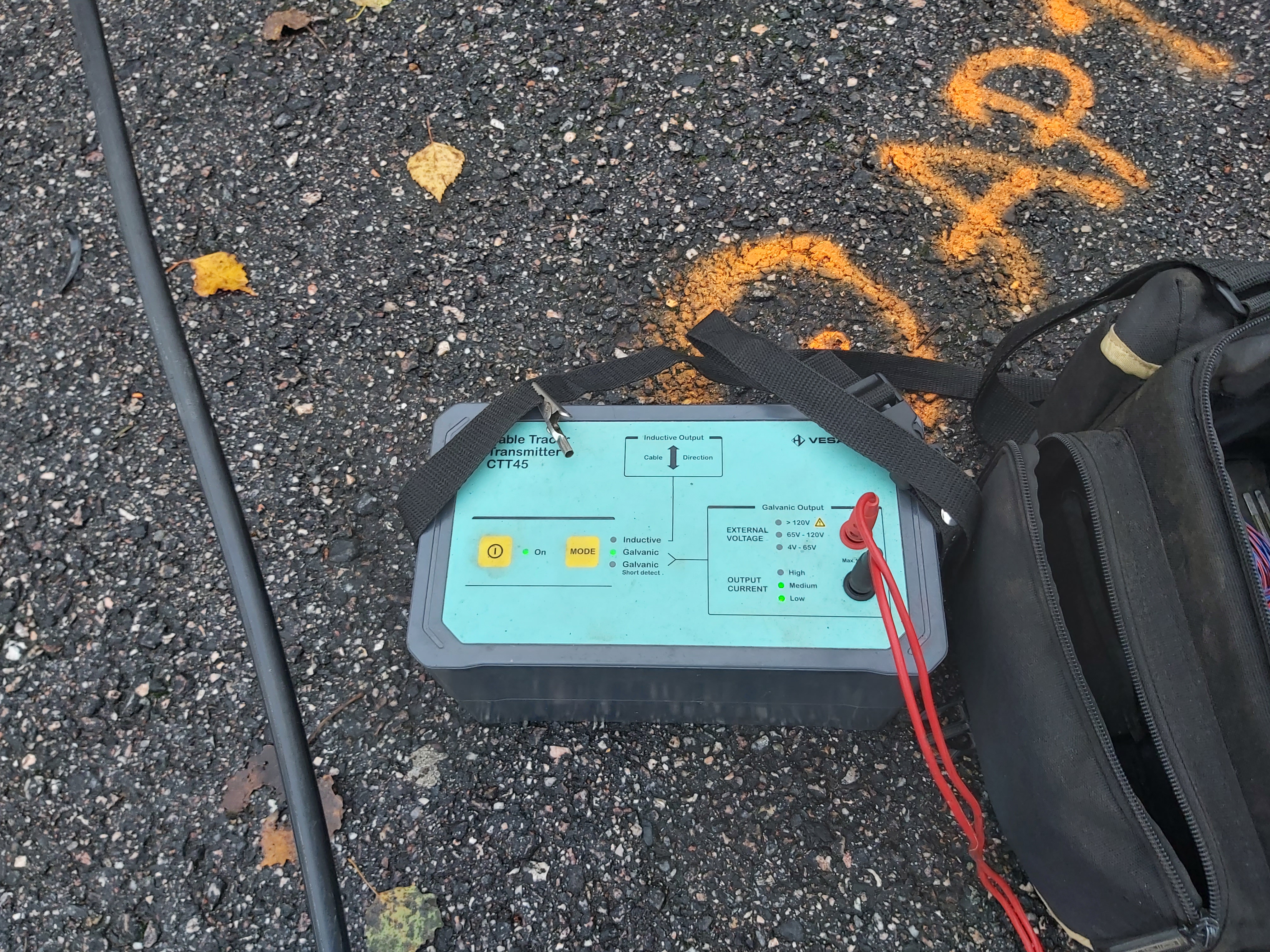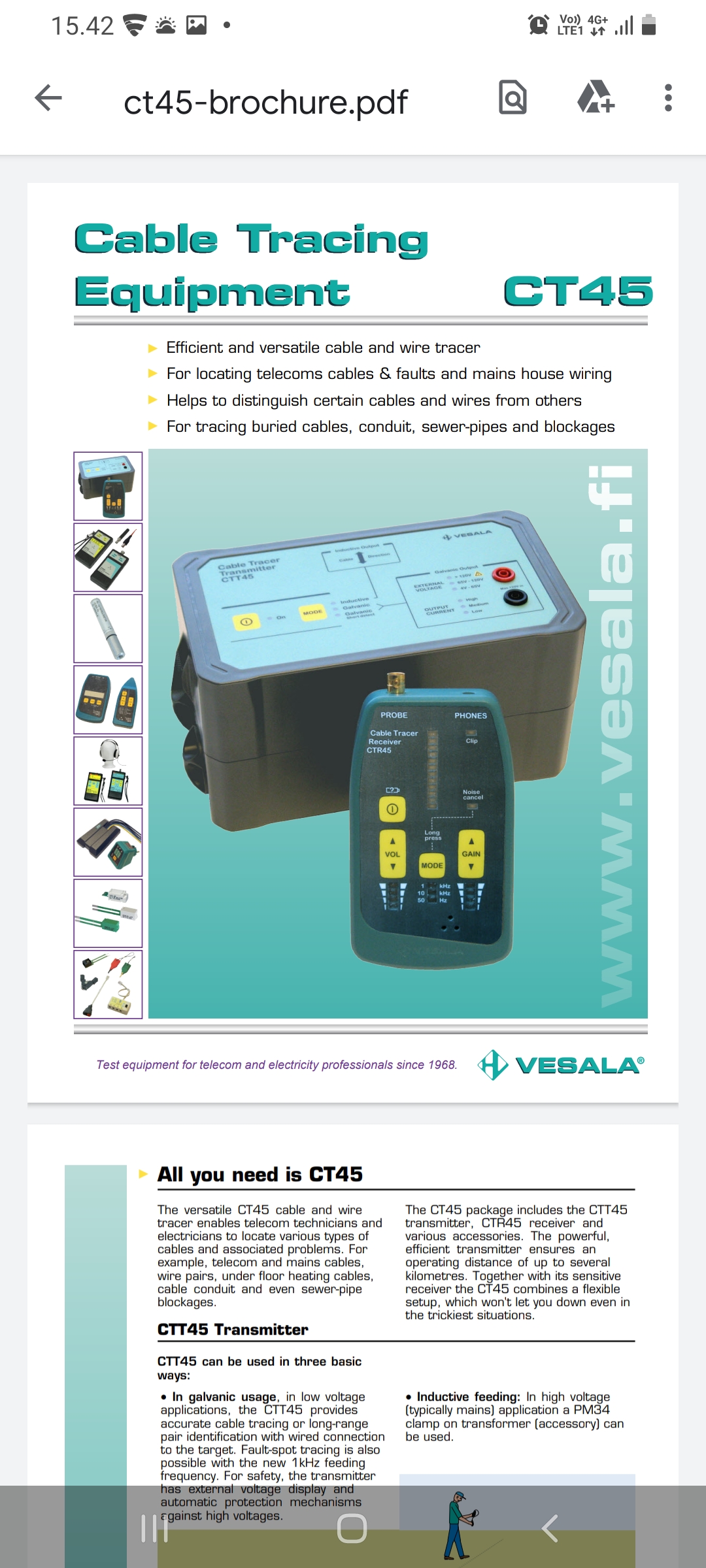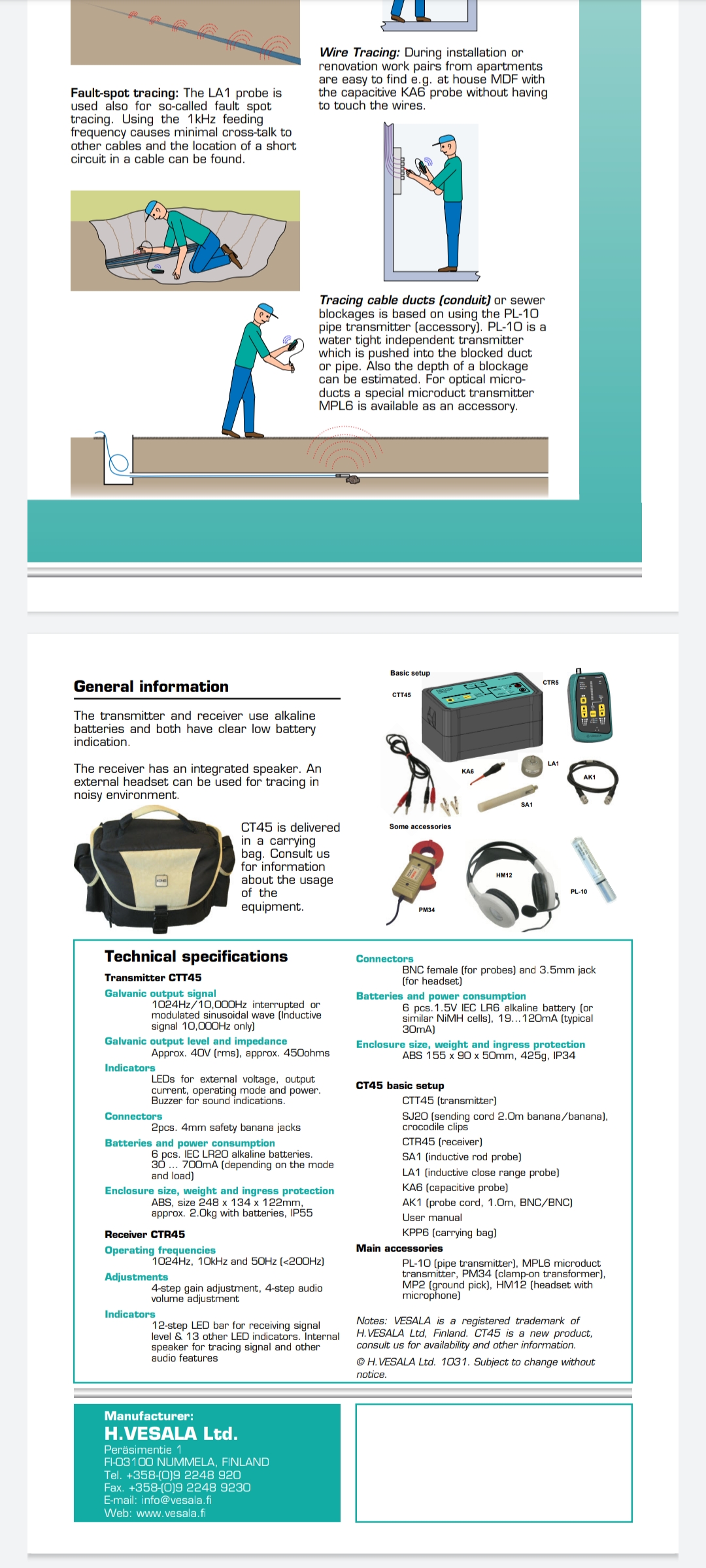I saw this cable tracer equipment in use few days ago connected to a telephone cable. Here is the device connected to the cable.
Closer view of the device reveals code CTT45 type code and manufacturer name VESALA.
It is a product made by a Finnish company VESALA. The CTT45 is the transmitter part of the CT45 cable tracing equipment kit. After some searching I found some brochures of it in Finnish and English.
This CT45 is designed for tracing buried cables, conduit, sewer-pipes and blockages.
“CT45 cable and wire
tracer enables telecom technicians and electricians to locate various types of cables and associated problems. For
example, telecom and mains cables wire pairs, under floor heating cables, cable conduit and even sewer-pipe blockages”
In galvanic usage (direct cable connection in low voltage applications like used here) the CTT45 provides accurate cable tracing or long-range pair identification or fault-sport tracing with wired connection to the target with 1 kHz feeding frequency. The transmitter also supports inductive feeding to high voltage (typically mains) application (with a PM34 clamp on transformer accessory).
CTR45 receiver recognizes and traces the 1kHz and 10kHz signals generated by the transmitter (can also trace 50 Hz mains wires).
In the end of brochure there are some more technical data:
Galvanic output signal is 1024Hz/10,000Hz interrupted or modulated sinusoidal wave. For inductive connection the signal 10,000Hz only. Galvanic output level is approximately 40V RMS (quite high compared to other cable tracers I have used) and impedance is around 450 ohms. That means that the device can push up up nearly 100 mA current to the cable. With 40V amplitude and limited current, the signal sent by it would not be more dangerous than voltages normally present on telecom wiring (typically 48V DC and up to 90V AC ring signal).
The signal generator looks many ways quite similar what other Cable tracers I have tested I have used. I would think that this CTT45 transmitter would work quite well also with my Cable tracing inductive amplifier circuits and with Cable tester NF-8209 receiver. In my own cable tracing and I often used around 8-9V peak to peak square wave signal transmitter (output impedance fed hundred ohms).




4 Comments
Tomi Engdahl says:
Klein Tools ET450 Tracer Kit Test on an Energized Circuit
https://www.youtube.com/watch?v=JLemPUD_Tq4
Tomi Engdahl says:
Fiber Cable Locating
https://www.youtube.com/watch?v=iodUxZ6zo2c
We cover the best way to Locate Fiber Optic Communication cables.
Power Locate Training
https://www.youtube.com/watch?v=XkHWPLqK-50
We cover off how to locate Power Utilities with our vLoc 3 Pro.
Tomi Engdahl says:
Episode 16: The Locating Life
https://www.youtube.com/watch?v=SZFFrdKJ2WY
n Episode 16, The Locating Life, Planet Underground TV follows personnel from USIC and On The Spot Utility Resources as they work to prevent utility excavation related damages on a daily basis. We follow Michael Toepke, a USIC locator, as he completes a typical suburban locate job and details some of the unexpected obstacles and challenges that arise. Join us at the forefront of the world of locating and explore sides of the profession that many are unfamiliar with. Like any job, some of the most important work is in the details. When it comes to locating, it’s important to know how to properly assess your surroundings, communicate with everyone around you, understand the type of property you’re working on, and keep to a sound routine that has worked in the past. Most importantly, you have to be prepared for unexpected variables.
Underground Utility Locating- Induction Method Part 1
https://www.youtube.com/watch?v=v717BNCePiY
Tomi Engdahl says:
Easily Trace Find Buried Water Sewer Lines & Electrical Pipes
https://www.youtube.com/watch?v=Kw0Zz_7IBP4
Easily locate, trace, find electrical pipes/conduits, or water/sewer lines that are buried up to 20″ (50cm) in soil or under a concrete slab with a high level of accuracy using the electronic device shown in this video. I also show a modification I made to the signal receiver. Save a lot of money. Enjoy the video!
Do it yourself sewer pipe video Inspection Camera
https://www.youtube.com/watch?v=WoLjs2xeTvg